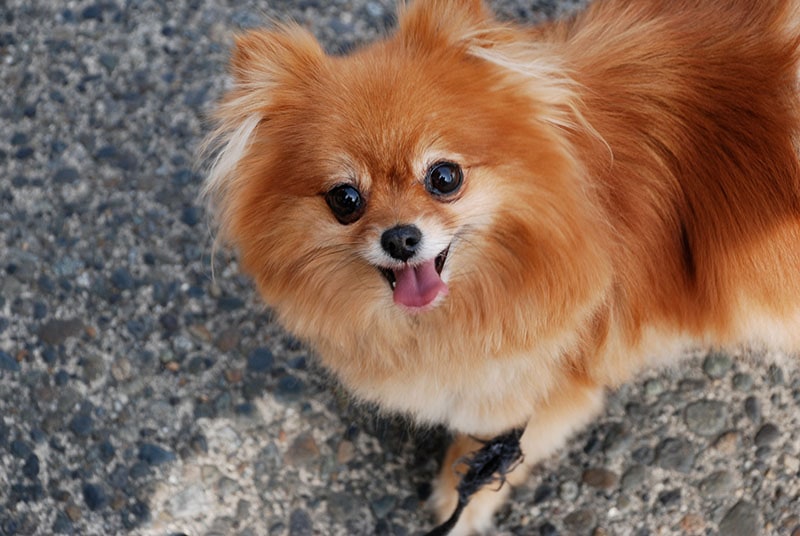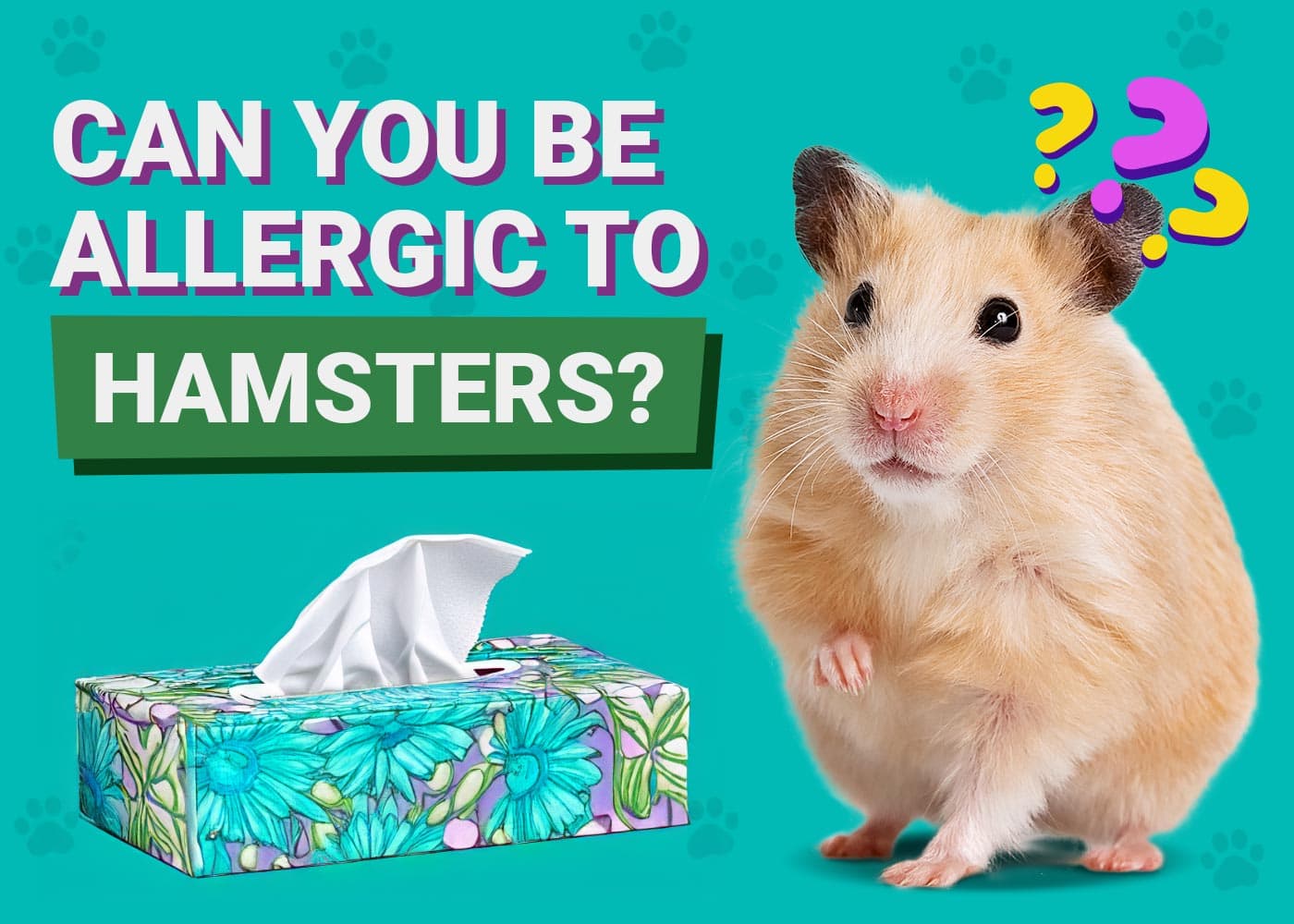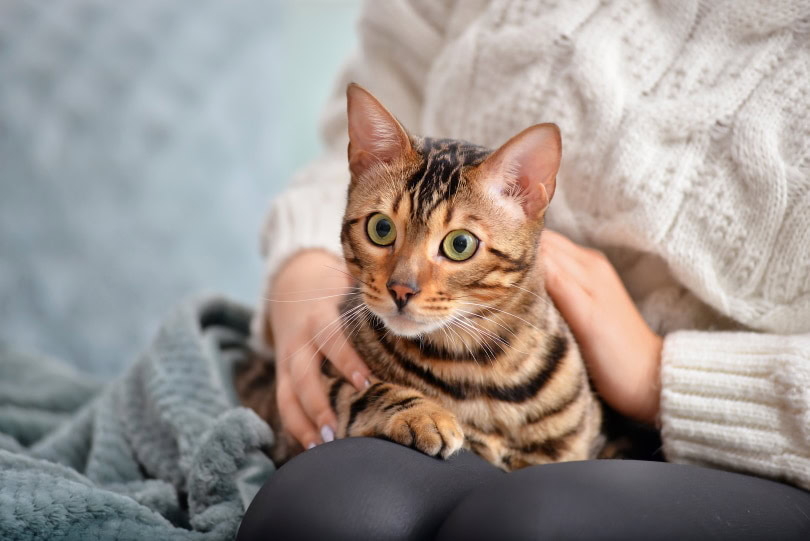VET APPROVED

The information is current and up-to-date in accordance with the latest veterinarian research.
Learn more »Pomeranians, also known as “Poms,” are a beloved and popular breed, and we’re not surprised! Who hasn’t been charmed by these pint-sized puffy angels? They’re cherished for their fluffy coats and adorable, fox-like faces and are one of the most recognizable toy breeds around the world.
Whether you groom them to look like little teddy bears or leave their coats au naturel, Poms have plenty of charisma. From their royal roots to their history in classical music, here are some fascinating facts about Poms.

The 14 Facts About Pomeranians
1. Small But Mighty
Pomeranians are one of the smallest breeds. Even adult Poms typically weigh between 3 and 7 pounds. But don’t let their reduced stature fool you; they have a lot of personality and energy. They were initially bred to be working dogs, and they still have a strong desire to please and be active. This can-do attitude makes them an ideal family pet for those who enjoy having a feisty pup around.
2. They’re Named After a Region in Poland
Pomeranians are named after the Pomerania region in Poland, located along the southern coast of the Baltic Sea. Historically, this area was part of Prussia, and today, it lies mainly within modern-day Germany and Poland. The name “Pomerania” (from the Slavic words “Pomorze” or “Pommern”) translates to “land by the sea.”
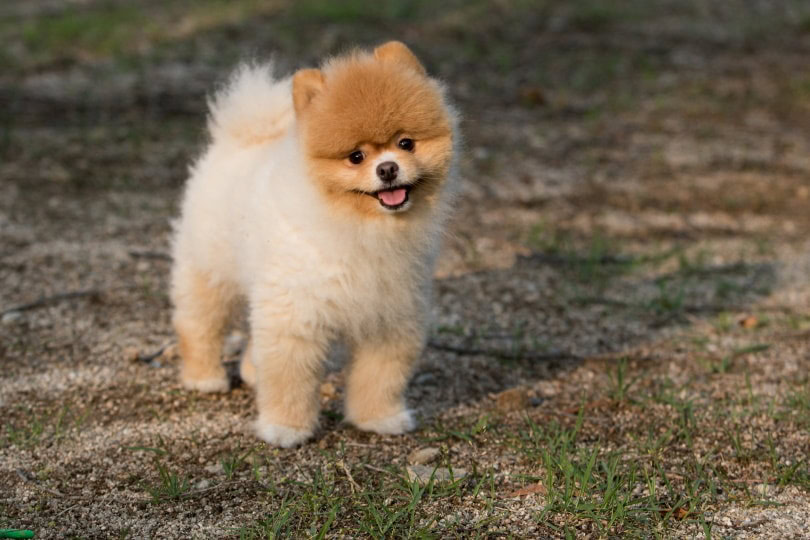
3. They Can Change Color
There’s something else that sets them apart from other dogs: their ability to change color as they age! The Pomeranian can develop different shades of fur over time, with some individuals becoming much darker than when they were first born. The exact cause of this color change is unknown, but the phenomenon may be due to genetic factors or environmental influences.
For example, some Pomeranians start with light cream-colored coats, usually turning darker by the time they reach adulthood. Some will even become black or brown in later years. The change in coat color doesn’t seem to significantly affect the animal’s health; Pomeranians continue to live long and healthy lives regardless of their new hue. Predicting whether a puppy’s color will change as they grow older is impossible.
4. They Have Royal Roots
Pomeranians have a royal history dating back to the 18th century. Queen Charlotte of Mecklenburg-Strelitz, the wife of King George III of England, owned a Pomeranian named “Phoebe” and is credited with popularizing the breed in the royal court. Pomeranians have been a staple of English life since Queen Victoria reigned over the country.
Her fondness for the breed made them a symbol of wealth and status in the 1800s. The Queen’s influence turned this small but mighty pet into an incredibly popular breed. As one of England’s most beloved monarchs, her endorsement gave Poms their place in high society, and they were often seen accompanying members of European royalty at formal events.
5. A Coat of Many Colors
Pomeranians come in a wide variety of colors, including red, white, cream, orange, black, and brindle. And that doesn’t even begin to cover the colorations. They can also have different markings and patterns, such as a parti-color, mask, and tri color markings. Almost no two Poms have the same colors. In some breeds, only one or two colors are available, while in others, there are four or five. In contrast, the American Kennel Club recognizes an incredible 23 color combinations in Pomeranians.
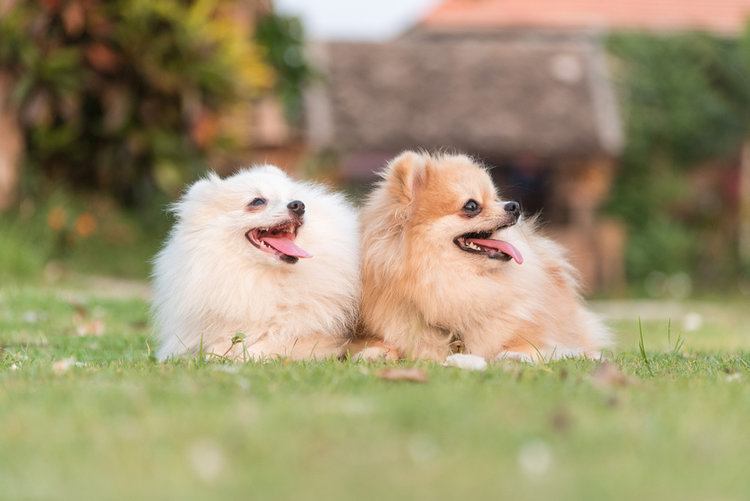
6. Poms Have Inspired Great Music
The Pomeranian has been inspiring great music for centuries, and some of the most famous composers in history drew influence from the small and fluffy animals. Wolfgang Amadeus Mozart, one of the greatest musical geniuses of all time, was known to be fond of his pet Pomeranian. Pimperl, Mozart’s beloved Pomeranian, is said to have been the subject of one of his arias.
Mozart’s Polish contemporary, Frederic Chopin, was also an admirer of these lively little dogs. One of his most famous compositions, the Minute Waltz, was inspired by watching his friend’s puppy chase their tail with great gusto.
7. Blue Poms Are Not Blue
As exciting as this sounds, for now, a true-blue coat can only be achieved with a (cruelty-free) dye job. The name “blue” does not refer to the color of their fur. Rather, blue Pomeranians are distinguished from other Pomeranian color types by their noses. Blue Poms have dull black coats, and their noses have hints of blue coloring. Their eyes can also be blue sometimes.
8. Poms Are Prone to Certain Health Issues
It is important to note that Pomeranians, like all breeds, can be susceptible to certain health problems. Some of the most common health concerns in Poms include hip dysplasia, luxating patella (a condition where the kneecap dislocates), and dental issues.
It is vital to work with a reputable breeder who screens their puppies for inherited diseases. After you adopt, you are the one responsible for keeping up with regular vet check-ups, feeding your Pom a high-quality diet, maintaining all preventative measures, and taking your pup to the vet as soon as you notice any signs of a health issue.
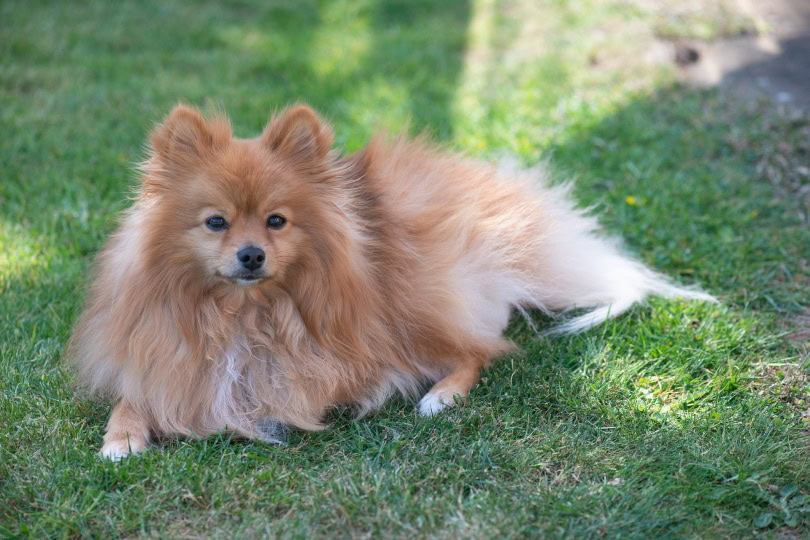
9. They Make Great Buddies
Pomeranians make great companion dogs because of their affectionate and outgoing personalities. They’re also very intelligent and trainable. It’s astonishing to find such cleverness packed into their tiny skulls. This is what makes it fun to teach new tricks and commands. Because of their small size, they’re also well-suited to apartment living and don’t require a lot of space. As a result, Pomeranians are ideal for city dwellers.
10. They’re Good with Kids and Other Pets
Pomeranians are generally good with children and other pets, making them a great addition to any family. They love to interact with their owners and can be very gentle around kids and other animals—once they know them and are familiar with them. Pomeranians will bring joy into your home with their lively personalities!
11. They’re Low Shedding
Pomeranians have thick, fluffy coats that require regular grooming, but they are considered a low-shedding breed. This makes them an excellent choice for people who don’t want a lot of dog hair around the house. The Pom’s double coat comprises a downy undercoat and an outer coat with long, straight guard hairs.
This double layer helps them stay warm in cold climates and reduces shedding by trapping loose hairs between layers. The Pomeranian’s thick fur also gives them a soft, plush look that many people find endearing.
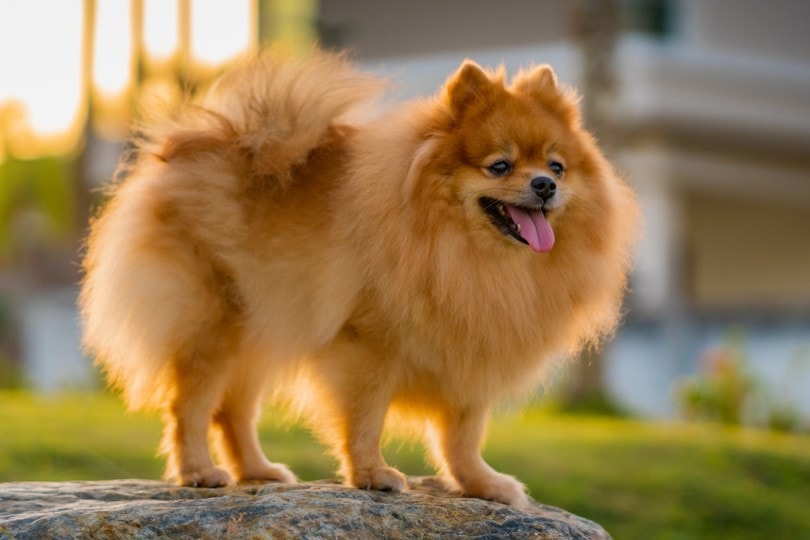
12. They’re an It-Dog in Pop Culture
Pomeranians have made appearances in popular culture, including literature, movies, and TV shows. One of the most famous Poms was Boo, the “World’s Cutest Dog,” with a huge following on social media. Boo sparked a frenzy of interest in Pomeranians and inspired a resurgence in the popularity of the breed before sadly passing away in 2019 of a broken heart.
13. They’re an Ancient Breed
Pomeranians have been a beloved family companion for centuries. Our love affair with Poms has been going on longer than you might think! This small, fluffy breed can be traced back to the Spitz family of dogs, which originated during the Stone Age. In fact, Pomeranians are called Zwergspitz in some countries. The exact origin of Pomeranians is unknown, but it is believed that they were bred down in size from larger hunting dogs to provide companionship. It’s much easier to cuddle a Pom than a Spitz on your lap.
14. They’re Surprisingly Good Watchdogs
Despite their size, Pomeranians can make excellent watchdogs. They might be tiny, but they don’t realize it. They are alert and bark when something is amiss, which can deter intruders. Their loud barking provides an excellent early warning system if a prowler enters your property. Pomeranians have a strong sense of smell and are aware of subtle environmental changes.
If they pick up on something, they are not afraid to let you know.
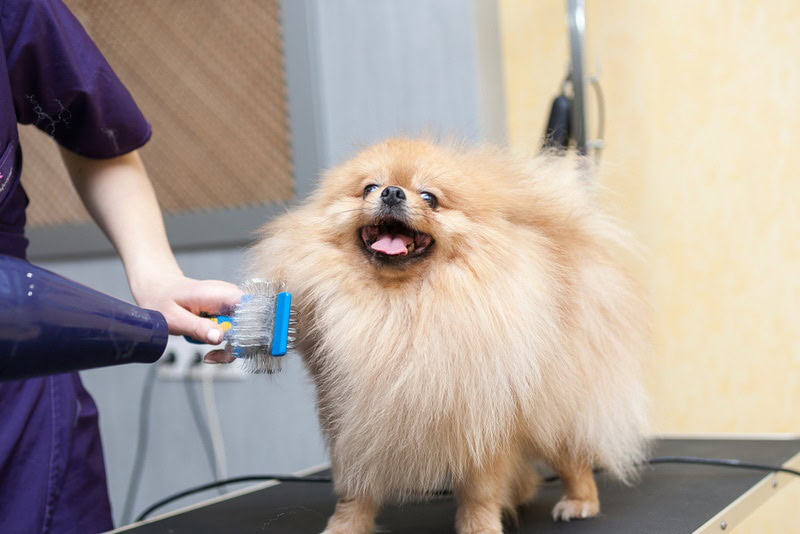

Conclusion
In conclusion, Pomeranians are more than just cute and fluffy companions; they have a rich history and unique characteristics that make them a fascinating breed. If you’re thinking of getting a Pomeranian, you can expect a loyal, loving companion that will keep you entertained with their antics and affection. Remember to always adopt from a reputable breeder and provide them with proper care and training.
See Also:
- Why Is My Pomeranian Spinning in Circles? 4 Likely Reasons
- Fox Face Pomeranian: Facts, Origin & History (With Pictures)
- Throwback Pomeranian: Facts, Origin & History (With Pictures)
Featured Image Credit: Amy Devine, Shutterstock
Contents
- The 14 Facts About Pomeranians
- 1. Small But Mighty
- 2. They’re Named After a Region in Poland
- 3. They Can Change Color
- 4. They Have Royal Roots
- 5. A Coat of Many Colors
- 6. Poms Have Inspired Great Music
- 7. Blue Poms Are Not Blue
- 8. Poms Are Prone to Certain Health Issues
- 9. They Make Great Buddies
- 10. They’re Good with Kids and Other Pets
- 11. They’re Low Shedding
- 12. They’re an It-Dog in Pop Culture
- 13. They’re an Ancient Breed
- 14. They’re Surprisingly Good Watchdogs
- Conclusion
